The secret of rolling position gained through ten years of blood and tears +: The operating rules behind the 300-fold profit
I spent ten years, and after countless warehouse failures, I finally figured out this "brainless rolling method +" - 300 times in 3 months, 30 million in hand.
Let it all out, those who understand have already started adjusting their strategies...
Rolling warehouse five-step kill
Waiting for the wind: Only take action when there is a rolling market for mainstream currencies such as ETH+
Precision ambush: open a position only when clear technical signals appear
Seize the opportunity: gradually increase investment after the trend is confirmed
Stop while you're ahead: Reduce your position immediately when you reach your target or see a danger signal
Get out of here safe and sound: Clear your position decisively before the market reverses
Practical skills
Profit Snowball:
After the first position is profitable, only increase the position at the key breakthrough point
Increase positions during a pullback and reduce positions immediately after a breakthrough
Remember: Not all profits are worth adding to your position
Base warehouse + T0 golden combination:
Half-position flow: 50% fixed holding, 50% for swing trading
Thirty percent bottom: 30% long-term, 70% short-term sniping
70% bottom: 70% core positions, 30% flexible operations
The most ruthless thing about this strategy is that it can not only take advantage of the big trend, but also reduce costs by using the band. But remember, rolling positions without discipline is self-defeating.
Killing, the market is a special cure for all kinds of dissatisfaction.
Ten years of experience boils down to one sentence: Let profits run, but don't forget to harvest them regularly. This is the true art of rolling.
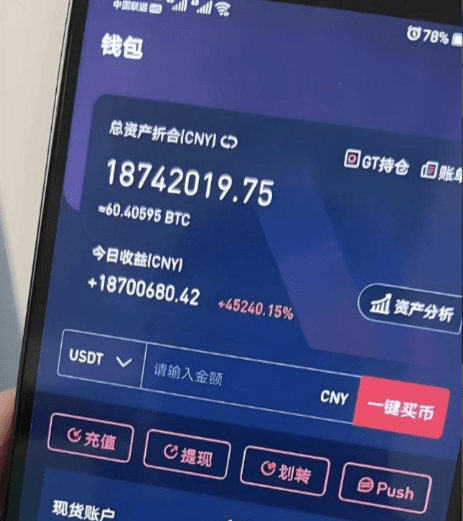
As a 10-year veteran in cryptocurrency trading, I’ve survived the bull and bear markets without fear of storms. I rely on these five rules to survive in the market!
This is a summary of my years of experience! Read it patiently, check for omissions and fill in the gaps, I believe you will definitely gain something!
1. If the price rises quickly and falls slowly, it means accumulating funds.
A rapid rise but a slow fall indicates that the dealer is accumulating chips and preparing for the next round of rise.
2. If the price falls quickly and rises slowly, it means selling.
A rapid decline but a slow rise means that the market makers are gradually selling off and the market is about to enter a downward cycle.
3. Don’t sell when there is a large volume at the top, and run away quickly when there is no volume at the top.
If the trading volume at the top is large, the market may continue to rise; but if the trading volume at the top shrinks, it means that the upward momentum is insufficient, so leave the market as soon as possible.
4. Don’t buy when the volume increases at the bottom, but buy when the volume continues to increase
The increase in volume at the bottom may be a downward relay, which needs to be observed; continued increase in volume indicates that funds are continuously flowing in, so you can consider buying.
5. Cryptocurrency speculation is all about emotions, and consensus is all about trading volume.
Market sentiment determines currency price fluctuations, and trading volume reflects market consensus and investor behavior!
Change is not cool at all, and it is even painful.
Every stride, every leg lift, is accompanied by pain. Only by tearing off the old muscles can stronger muscles be born.
Only by understanding the past can we reconstruct a new self. The cycle of triumphant progress and retreat is too difficult for ordinary people to endure.
Yes, some people don't even have the chance to change.
Respect the market, keep learning and conducting in-depth research, constantly optimize your system and learn new knowledge, and never think you are good enough or invincible.
Only by staying vigilant and constantly considering different changes in the situation can you become the ultimate winner in this market!
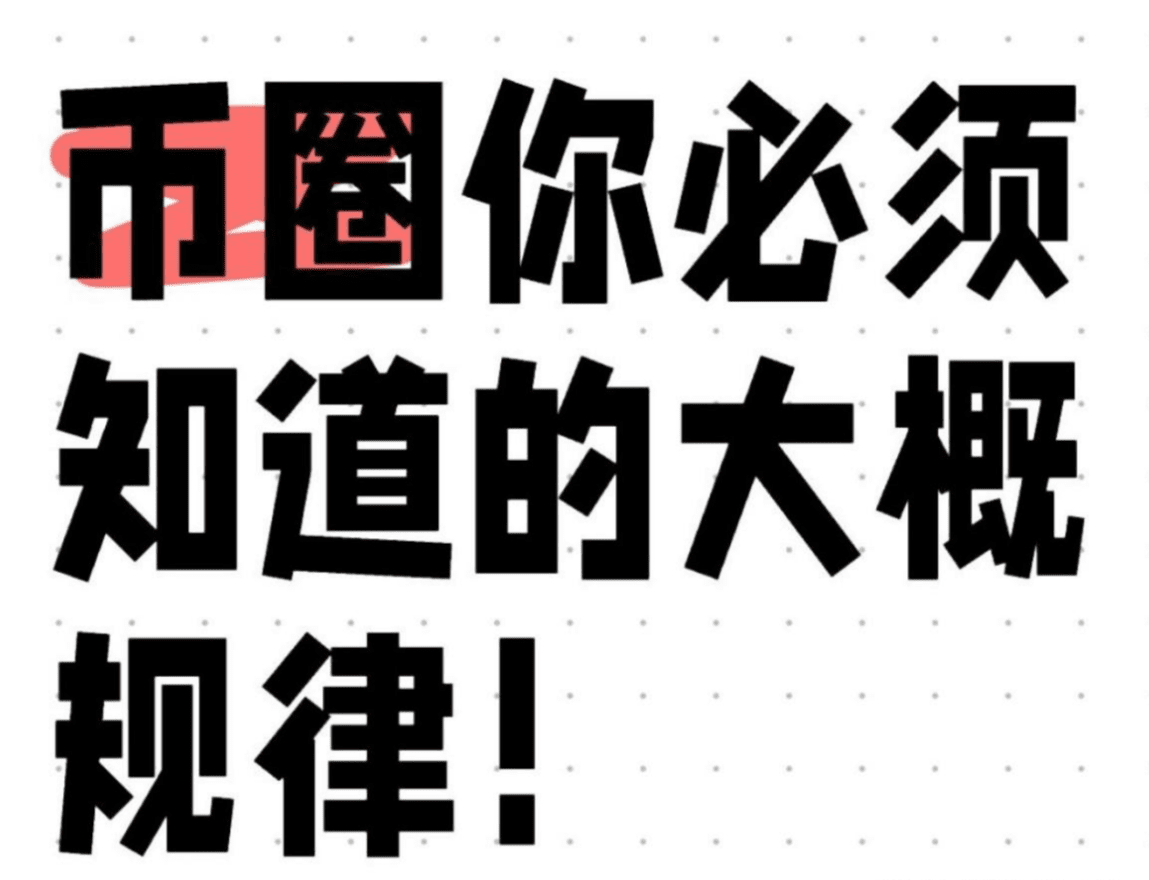
Traders must know: trading volume and chip distribution chart!
What is volume distribution? It shows you where the volume is at!
Generally speaking, the transaction volume we know is the total number of transactions between buyers and sellers during a certain period of time.
What I want to introduce today is not ordinary trading volume, but a commonly used indicator, the trading volume chip distribution chart.
Trading volume refers to the total number of transactions within a certain period of time. Trading volume is a manifestation of supply and demand, which refers to the total amount of transactions at a certain price within a certain period of time.
When supply exceeds demand, people rush to buy, and the transaction volume naturally increases; on the contrary, when supply exceeds demand, the market becomes cold.
There is no one here, buying momentum is scarce, and trading volume is bound to shrink.
VolumeProfile+, also known as Volume byPrice, displays a specified price level within a specified time period.
trading activities.
By using this indicator, we can clearly know that there is a trading volume at a specific price in a specified time period, and we can also easily
Understand the buy and sell volume at that price. The price volume profile can also be used as a resistance for the stock price.
and support level.
So how do we use it?
Volume Profile Visible Range (VPVR+)
I will briefly introduce some important terms when using VPVR in the following chart.
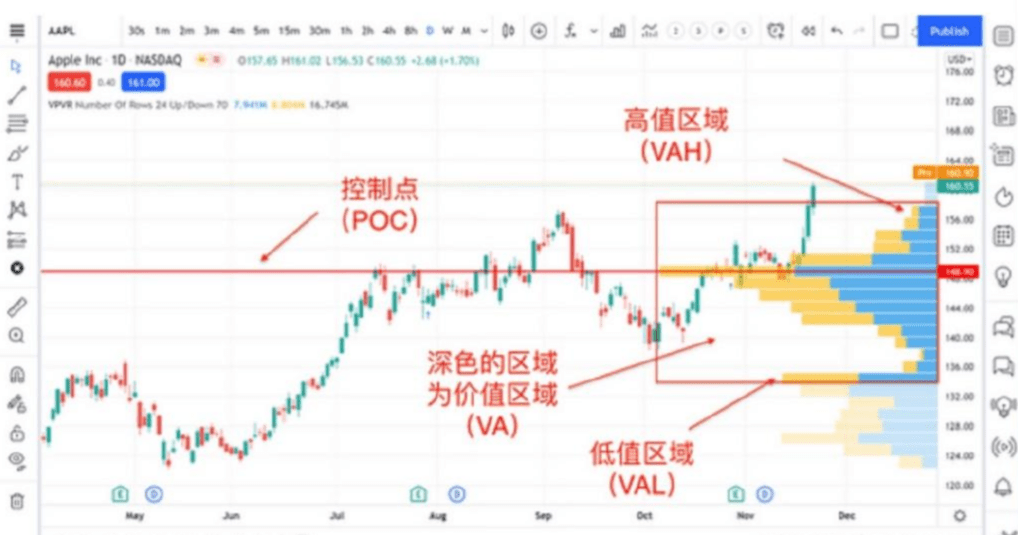
Name within the VPVR indicator
Point of Control (POC) – The price level during the period with the highest trading volume.
Price Area (VA) - 70% of the total volume during the specified time period will be displayed in dark colors
Value Area High (VAH) - the highest price level within the Value Area.
Value Area Low (VAL) – the lowest price level within the Value Area.
Calculation of VPVR
How to calculate the price area (VA)
1. Determine the total volume (total buys and sells) from the volume distribution chart.
2. Multiply the total buy and sell quantity by 0.7 to determine how much is 70% of the total buy and sell quantity. (70% is a typical example.
For example, however, traders may use any percentage at their discretion).
3. Start from POC (the column with the largest total volume in the distribution chart) and record its total volume. POC will be the price area added to
The first distribution column.
4. Take the two lines above the POC (Initial Value Area) and add up the total volume of both.
5. Take the two lines below the POC (initial area of value) and add up the total volume of both.
6. Determine which one has a larger total volume and add it to the total volume of the POC found in step 3.
7. Repeat steps 4 and 5, adding the larger of the two numbers to the price area.
8. Once the total volume for a price area equals or slightly exceeds the volume found in step 2, the price area is identified.
The highest line within the price area will be the Value High area (VAH), and the lowest line within the price area will be the Value Low area (VAL).
VPVR as support or resistance
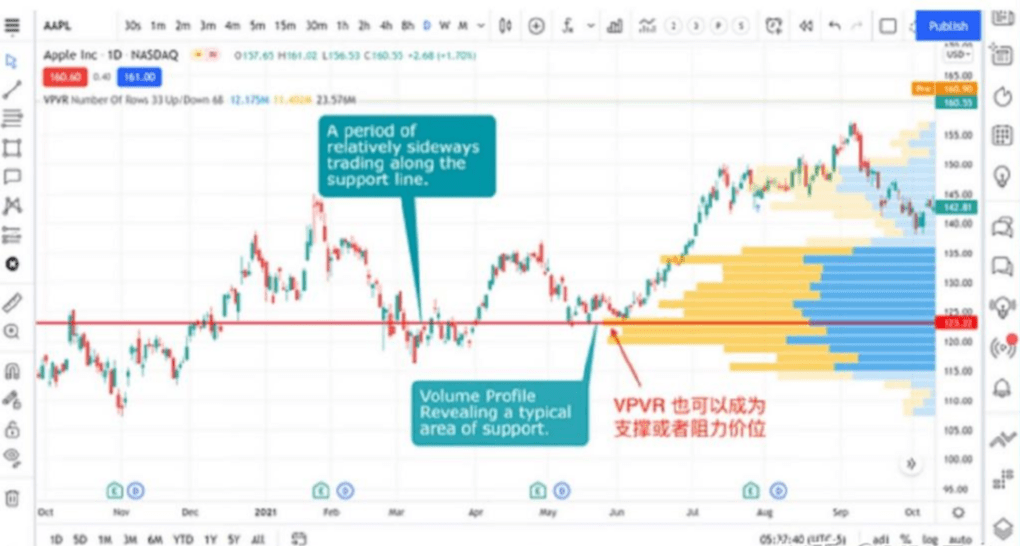
Volume Profile (VPVR) can also be viewed as support or resistance. The principle is simple – higher volume means there are buyers.
Transactions with sellers mean that there are buyers and sellers at that price. If the price hovers in the price area (VA), it also means that
The price is at a supported price level, which can also be regarded as the cost at a certain price level.
To make it easier for readers to understand, I divide VPVR into two cases:
1. The price falls above the price area (VA) and the point of control (POC). The point of control and the price area will become support.
2. The price falls below the price area (VA) and the point of control (POC). The point of control and the price area will become resistance.
Take the Apple icon in the figure above as an example. When the price is at the control point ($122), a support point is formed. When the price drops to
At this price, there is a high probability that buyers will rush in to buy the stock.

On the contrary, the price of $CVX is below the point of control (POC) of the volume distribution, and the price is also in the non-price range.
So from the VPVR we know that the price of $103 will be a resistance.
Volume Node+
Regarding volume nodes, it is also a relatively new concept for me. I will simplify it here so that readers can understand it more easily.
Regarding volume nodes, they are divided into high volume nodes* (High Volume Node referred to as "HVN") and low volume nodes*
(Low Volume Node is referred to as "LVN").
High Volume Node (HVN) is a peak in trading volume at or near a price level. HVN can be considered an indicator of a consolidation period.
There is a lot of activity on both the sell and the sell sides, and the market spends a lot of time at this price level compared to other levels in the volume profile.
This could mean the "fair value area" of an asset.
Because the number of buyers and sellers is roughly the same, the market is in equilibrium. So when the price reaches the previous HVN (also known as the resistance level),
force), there will be a period of sideways fluctuation before it is possible to break through the sideways stage and continue to rise.

So as explained above, if the price reaches the previous HVN, once it breaks through, it is also considered to have broken through the resistance, which means that the price has
There are more buyers than usual, and the number of buyers is greater than the number of sellers, so the probability of prices continuing to rise is higher.
Low Volume Nodes (LVNs) are the opposite. They are the lowest troughs (or significant declines) at or near the price level.
They are often the result of a breakout rally or breakdown. During a rally or breakdown, there is usually an initial surge in volume followed by a sharp decline.
A decline could mean an asset enters an “unfair value area.”
When the price approaches a previous LVN (or unfair price area), the market is more likely to rebound to or from that price level
Since it is considered an unfair price zone, the market is moving higher at this level compared to some other price levels in the volume distribution chart.
It won't take too much time there.
My personal understanding is that when the price is at a low transaction node, there are fewer buyers and sellers to digest, so the rise and fall are more likely to occur.
Faster speed.
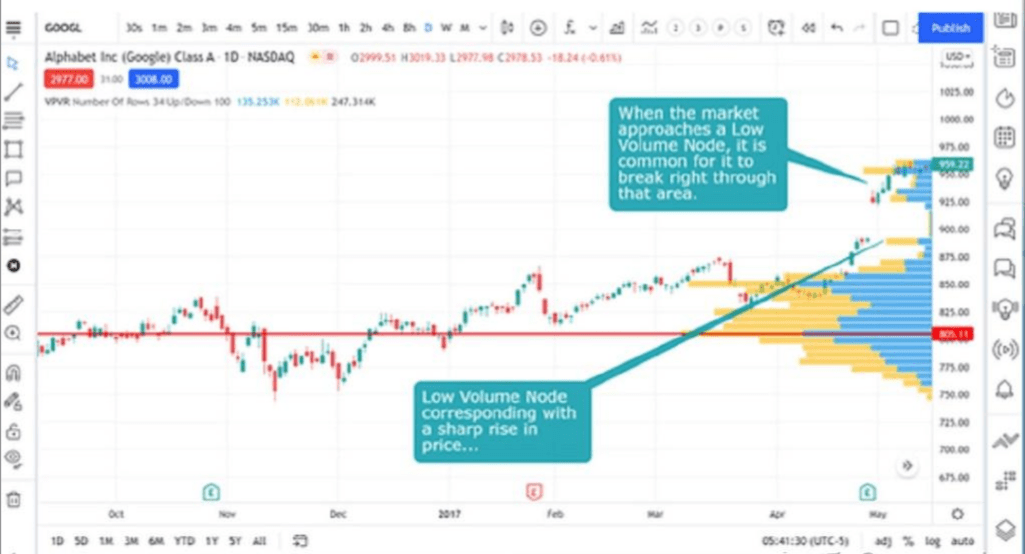
Volume distribution is an indicator that I personally like because it clearly shows the trading volume of the price.
It takes a very short time to know in which price range the trading volume of a specific period of time is accumulated.
I will use VPVR in conjunction with other indicators such as VWAP, trend lines, and candlestick charts before making a decision.
Of course, we cannot rely on one indicator to conquer the world.
Using nodes for transactions
Due to the dynamic nature of volume distribution, it can be a particularly useful tool for determining entry and exit points for day trades.
First, the formation of points of control and price ranges can indicate future price movements and can be seen after a period of high trading activity (i.e., a few hours after the start of trading).
It becomes the most important factor.
Finding Value
When the current price drops below the price range and the point of control, it indicates that the price will rise and return to the most active price.
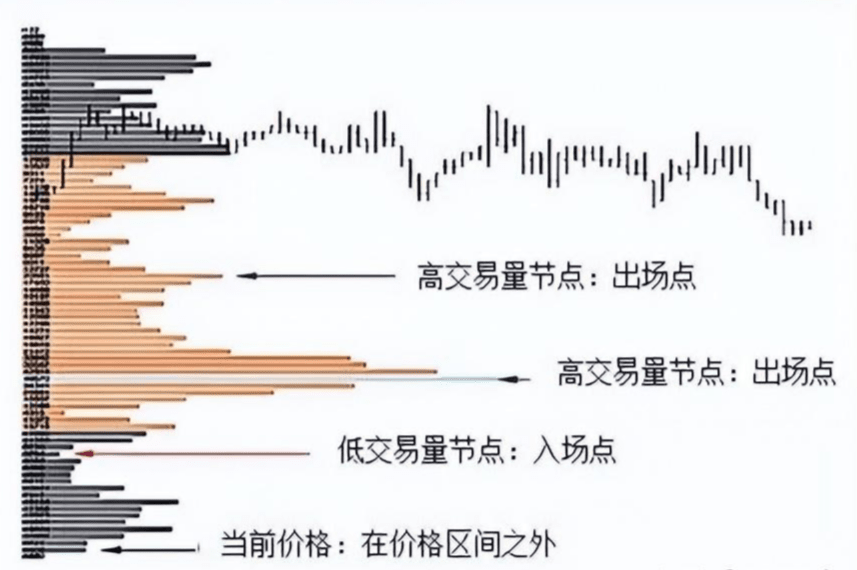
Because price ranges and points of control represent areas of high gravity where participants see the highest value, if the current price falls
Out of this area, it may provide a reference: if the current price is below the control point, go long; if the price is above the control point, go long.
Go up and short.
In the above chart, we are looking for potential entry points by looking for low volume nodes. Low volume nodes can provide good entry points.
points, because they represent prices that were previously ignored. This situation will arise again when we anticipate a price change in the direction of the price control point.
Placing a buy stop order at the lowest volume level above the current price can provide a good long-term entry point.
Transaction Management
Set a buy stop order at a low volume level. Set a profit target at a high volume level above the entry price and at a level below the entry price.
Set a protective stop-loss order at a high volume node in the grid.

High trading volume nodes can provide high probability locations for exit points. Because the market expects to have found a relatively attractive price in the early stage, this generation
Great opportunity to sell.
The above chart shows the potential exit points to coincide with high volume nodes above the entry point. In this example, we used two
Exit points: Profit Target 1 and Profit Target 2. Set a protective stop loss below the high volume node. This will minimize the risk of price fluctuations.
Possibility of being stopped out on a move below a high volume node and then back up.
Exit Analysis
Price reaches a high volume node, exit at profit target 1 and profit target 2.

The chart above shows that the price reached a high volume node and exited at profit targets 1 and 2. If the price continues to rise and exceeds
Price range, the next step should be to focus on possible short entry points, because the price may reach the control point of the day.
Traders who don't want to go short will wait for the next opportunity, which is when the price is below the point of control.
The volume distribution shows traders where and how much trading has occurred so far. Because it is dynamic, as long as there is a new indicator
It makes the entry change and is very useful in day trading.
It should be noted that the trading examples listed in this article represent only one way to use volume distribution to develop trading plans and strategies. Traders can
Use experimentation and observation to find unique ways to use this important trading tool.

If you want to trade cryptocurrencies once and for all and want to improve your winning rate, it is enough to understand this article. The historical backtest winning rate is as high as 80%.
This is a very simple and brainless trading strategy. The essence is in the picture. Here I use the VRVP indicator in Tradingview.
Simply put: The volume distribution chart shows the trading activities at each price level within the range. The highlighted area on the right side of the chart is the dense
The intersection area (there is consensus), while other areas are sparse transaction areas (no consensus).
The red line in the figure is the control point POC (the price level with the highest trading volume, which usually becomes the support/resistance level). The two white lines in the figure are
The high value area (VAH) and the low value area (VAL), between them is the dense trading area (highlighted column in the figure)
Trading strategy:
1. Breakthrough strategy: Find the gap (the price will quickly cross the gap, and the price in the figure will usher in a big surge when it enters the gap), and judge the long and short positions.
Trend, enter the position after the price enters the gap area, and increase the position when the floating profit is high. This is also my favorite strategy, the profit is very considerable and the winning rate is very high
horrible...
2. Reversal strategy: When the price approaches VAH or VAL, observe the RSI indicator. If a reversal signal appears, you can do a reverse move in this area.
Trading ((Stop Loss 2%)
Bitcoin trading, the big and small cycles determine the entry point, and the profit can be multiplied tenfold
We have talked about entry points in the trading system before. The choice of entry points is very important for trading.
Anyone with practical trading experience knows that if the market breaks out falsely, or the entry point is not good and the stop loss is too large, then the only way is to reduce the entry capital.
A big market trend often makes less profit.
Everyone needs to summarize their own entry method, not to mention those who enter the market casually based on their feelings.
The method I personally use more often is to combine large and small cycles to find entry opportunities.
Because we are doing trend trading, the method must include trend judgment, and secondly, choose the trading level according to your own trading style.
Therefore, what is recommended here is to make judgments based on three cycles: large, medium and small.
1. Big cycle: determine the direction and analyze the trend, whether it is in a volatile or trending state, only focus on the start and continuation stages of the trend, and stop when it is volatile.
wait..
2. Medium-term: Operation level, position level
3. Small cycle: entry level, stop loss level
Choose large, medium or small cycles according to your own operating habits.
The diagram below shows how to coordinate large and small cycles. In the industry, this is known as "follow the large cycle, go against the medium cycle, and follow the small cycle."
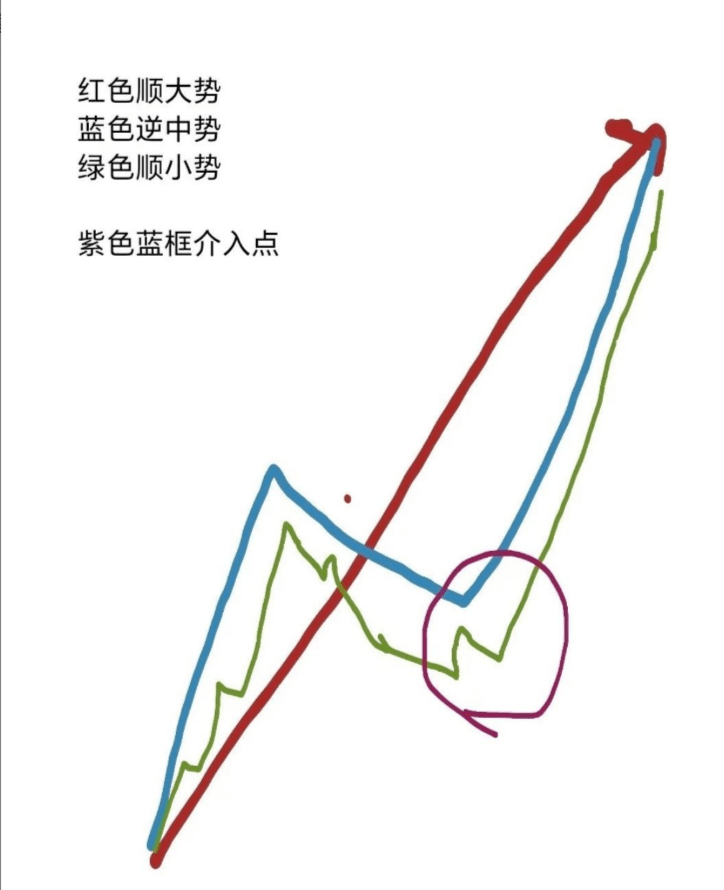
Jim Rogers'* Core Investing Rules
Jim Rogers was born in Alabama, USA in 1942. After graduating from the History Department of Yale University and Oxford University, he worked on Wall Street.
He co-founded the Quantum Fund* with George Soros, which achieved a return of 4200% over the past ten years. After retiring at the age of 37, he worked at Columbia University.
He is also a commentator for many TV and radio stations. He is known as one of the most influential people in the world, along with Warren Buffett and George Soros.
The world's three largest investors. His representative works include "Jim Rogers: A Motorcycle Trip Around the World" (Jim Rogers: A Motorcycle Trip Around the World
S: Great Discoveries of the World) etc.
Rogers said that his investment principle is very simple, which is "buy low and sell high". This sentence sounds simple, but it is difficult to do.
Most people only focus on the bull market, but are indifferent to the bear market. Think about whether you are like this? Many people see the bull market going
High, and then after a period of time to follow the trend to enter the market. This is obviously not feasible.
Rogers's approach is exactly the opposite. He often watches the bear market to see which stocks are bottoming out. When people are enthusiastic, he will be cool.
In 1973, he and George Soros co-founded a hedge fund and invested in
These investments were highly successful, with a return of 4200% in 10 years.
It wasn't that difficult for Jace.
When the Great East Japan Earthquake hit, Rogers bought Japanese stocks that were sold off due to panic, and they did bring him a lot of profits.
He sold a large portion of his Japanese stocks in 2016 when the Abe administration decided to increase the consumption tax, and now Rogers is back on track.
In addition, he also invested in Zimbabwe. When the Zimbabwean dollar suffered severe inflation and was abolished in 2015, there was a period of chaos.
But Rogers believes that the return on this investment will be considerable in five or ten years.
Rogers shared four rules for successful investing:
The Rule of Successful Investment ①——Work Hard to Accumulate Wealth
In addition to "buy low and sell high", Rogers suggested that we should first learn to save money and accumulate capital. Wealth is not innate, especially for young people.
The assets they have are very limited. Therefore, I suggest that they should work hard first and accumulate capital through success in their work.
Everyone wants to get rich overnight, but it is not easy. So my next piece of advice is to learn to wait for the right time to invest. A successful investor
Investors often know how to spend most of their time waiting and do nothing else. When the opportunity comes, they will invest decisively and continue to
wait
Rule 2 of Investment Success - Become an Expert in a Field and Expand Your Knowledge
Rogers recommends that you need to fully research the field you are going to invest in until you become an expert in this field before you start investing.
They will blindly invest based on information from TV or the Internet, such as "Apple's stock price is very cheap" or "it can rise to $30,000", but
Making money is not that simple.
The investment field can be based on your own preferences, fashion, cars, sports, food, etc. If you are interested in fashion, you can
Then, don’t just be enthusiastic for a short time, but stick to it for many years.
Once you understand this, you will naturally have the perspective and thinking of an investor.
Of course, you might be tempted to show off your ideas or discoveries to friends and family, but don't tell anyone at first.
Quietly investigate promising business opportunities or enterprises in related fields.
Of course, you can't fish for three days and dry the net for two days, but you have to persevere. In this way, you can be ahead of analysts in London Financial Street and Wall Street.
Identify promising business opportunities or ventures.
Of course, you can't fish for three days and dry the net for two days, but you have to persevere. In this way, you can be ahead of analysts in London Financial Street and Wall Street.
Identify promising business opportunities or ventures.
Also, don't buy investment projects recommended by others. Investments should be based on your own research. Rogers said he always did it alone.
He would continue to do this in the future, because past experience had taught him that blindly following others' advice would lead to losses.
Investing requires a lot of time and effort, and the same is true when selling. Investing is often based on long-term research into a particular area.
It may take 5 or even 10 years to achieve this. Therefore, investing is by no means an easy way to make money.
Rule 3 of Investment Success - Invest Cautiously and Wait Patiently
If you only have 20 investment opportunities in your life, you will definitely be more cautious about your investments and will not invest blindly.
I will do my best to investigate until I feel I am completely safe. This is what is called a successful investment, that is, to do my best to investigate before investing, and then act prudently.
case.
Another piece of advice is very important. That is to learn to stop selling in time. Usually, after the investment is over, people will start to
Especially when you have made a lot of money and are feeling proud and complacent, you should learn to quit while you are ahead.
Don't immediately turn your attention to the next transaction, but be consistent and keep your eyes on the transaction in front of you.
It is time to start learning again and wait for new opportunities to come before investing cautiously.
But many people lack patience and rush to act, which leads to failure. If you can't wait any longer, Rogers suggests that you go to the shipwreck and relax.
Have some beer.
In fact, "learning to wait" is also an important factor for investors' success.
He can calm down and wait and see. According to his many years of experience, the next good investment opportunity will never appear immediately after making a profit.
So you have to be patient and wait. That’s why Rogers said you only have 20 investment opportunities in your life.
Wait calmly for the next investment opportunity to come.
Rogers believes that if you want to be successful in life and investment, you must understand the world, learn history and philosophy.
To succeed, we must look to the future and engage in dialogue with it. Therefore, an understanding of history can be a powerful weapon.
Mark Twain once said: "History always repeats itself." As this wise saying goes, history is like rhythm, always repeating itself in a subtle way.
A slightly changed form reappears. Similar things that happened in the past will definitely happen again in the future. Therefore, if you understand the past
We can learn from history by studying what has happened. The future is mostly an extension of the present, but there are also unexpected situations.
To study history is to understand humanity itself, and to understand crises.
When teaching history to children, Rogers often warned them not to rely on only one source of information, but to refer to multiple media at the same time.
For example, for television, you should watch BBC, NHK and Chinese news. In addition, Al Jazeera in the Middle East is also a good choice.
source of information.
You have to collect information widely and learn to piece together the fragmented information. If you only read American records of World War II,
The information you get is undoubtedly one-sided, so you should also read the relevant records of Japan or Russia.
Why can't we rely on a single source of information? Because all history is based on the perspective of the country.
written.
In addition, studying philosophy is also very important. Philosophy is a study of the nature of human beings and society. To understand the future, we must
So, it is crucial to study history, read literature, watch movies and plays, and understand humanity.
From Rogers' core principles, I see the same idea as that advocated by Sancai. We always say that in a bear market, we should build
Cash flow is the capital for accumulating bargain hunting. If the price of a target is already high, how much profit space can you get by exchanging less for less?
More, isn’t that the truth?
Waiting patiently is not an easy task, and learning to control your heart is a skill. Good opportunities do not always appear.
In life, if you can seize a few major opportunities, it will be enough to bring about earth-shaking changes.
As an outstanding member of Sancai shared, she won 360,000 on ETC at that time, even though the investment environment changed at that time.
I stopped investing in XRP and cashed out 360,000 and put it in my pocket. I will use this 360,000 as the principal for the next bull market.
A 10x-valued currency can easily become 3.6 million. If you add asset allocation rotation, the resulting power is even more immeasurable.
However, whether you can grasp the rotation rhythm well depends on your self-control. This kind of self-control needs to be trained and honed over time.
grind.
I believe that everyone who enters the cryptocurrency world will not easily leave this treasure forest full of opportunities despite its ever-changing nature.
Winning requires continuous and in-depth cultivation, which also confirms what Rogers said about becoming an expert in a certain field.
Perhaps some people find it difficult to become experts themselves, but for a group to become professional, different talents must play different roles.
If the value is true, then this team is much stronger than the individual strength, right?
If you want to reap good results in a bull market, you must make the most of the bear market. Only by studying the investment targets with good rhythm can you really reap good results in a bull market.
Just as he arrived, he left the crowd far behind!
Regarding the repetition of history, we cannot be like ordinary people who lose confidence when the market is cold, but we should do the opposite.
Think about it, without a bear market and without good targets at low enough prices, we cannot make any real huge profits.
So at this time, we should be more hesitant and secretly happy! Because spring is not far away, the current difficulties are only temporary and will eventually pass.
Go! It will be doubly sweet when spring comes.
No matter how hardworking a fisherman is, he will not go out to sea to fish in the stormy season. Instead, he will carefully guard his fishing boat.
In the past, a sunny day will always come! Pay attention to me, teach you to fish and you can fish, the door of the currency circle is always open, follow the trend
Only by doing this can you have a life that goes with the flow. Collect it and keep it in mind!
BTC ETH BAB